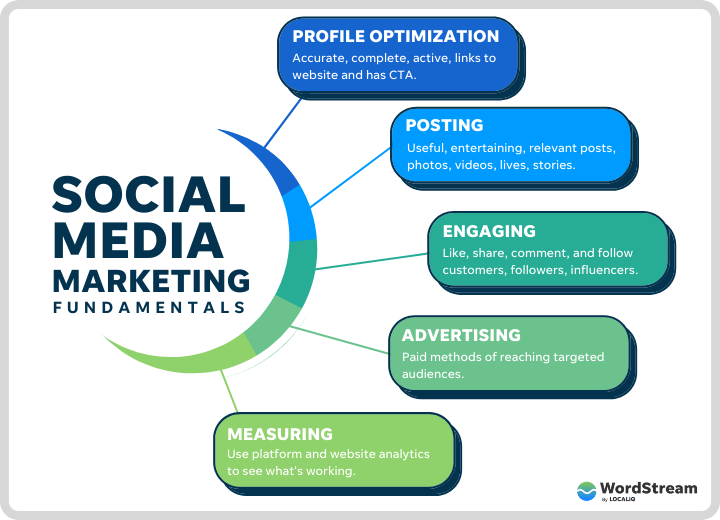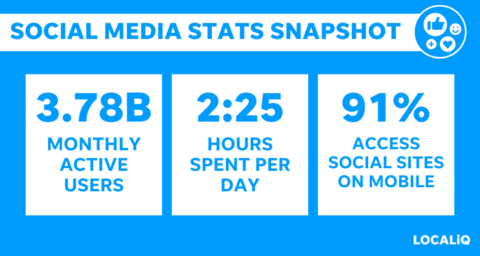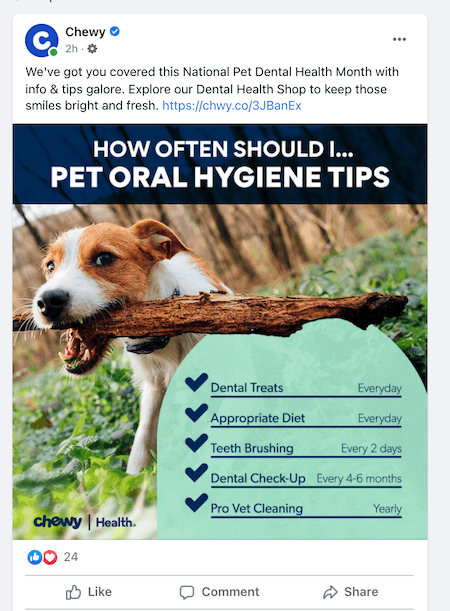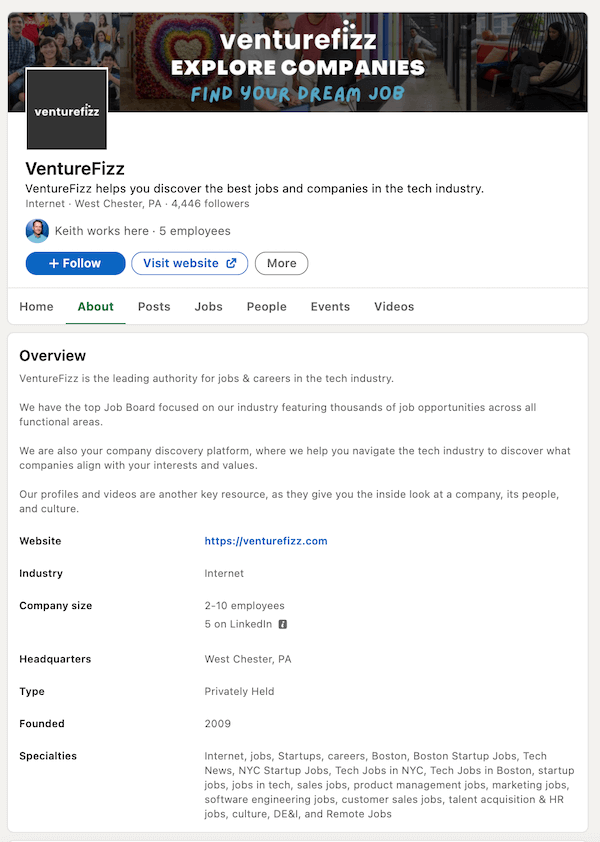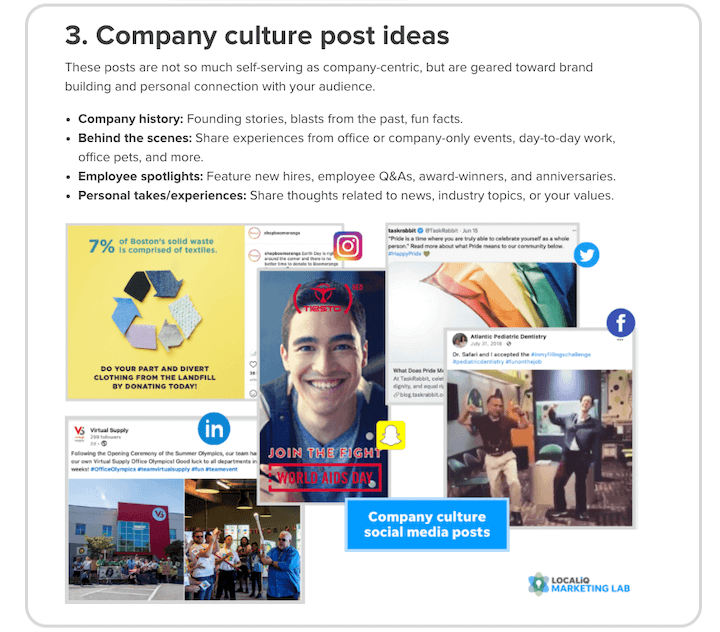Social media marketing is a powerful way for businesses of all sizes to reach prospects and customers. People discover, learn about, follow, and shop from brands on social media, so if you’re not on platforms like Facebook, Instagram, and LinkedIn, you’re missing out! Great marketing on social media can bring remarkable success to your business, creating devoted brand advocates and even driving leads and sales.
In this complete guide to social media marketing, you’re going to learn:
- What social media marketing is, with benefits, stats, and tips.
- How to build a social media marketing strategy and a plan to carry it out.
- The seven best social media marketing platforms and how to use them
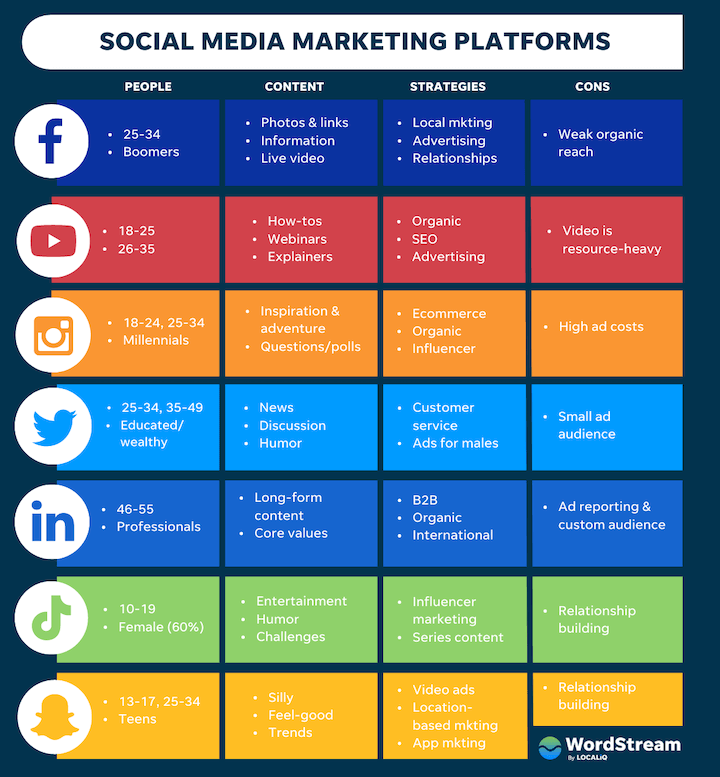
Table of contents
What is social media marketing?
Social media marketing is a form of digital marketing that leverages the power of popular social media networks to achieve your marketing and branding goals. But it’s not just about creating business accounts and posting when you feel like it. Social media marketing requires an evolving strategy with measurable goals and includes:
- Maintaining and optimizing your profiles.
- Posting pictures, videos, stories, and live videos that represent your brand and attract a relevant audience.
- Responding to comments, shares, and likes and monitoring your reputation.
- Following and engaging with followers, customers, and influencers to build a community around your brand.
Social media marketing also includes paid social media advertising, where you can pay to have your business appear in front of large volumes of highly targeted users.
Benefits of social media marketing
With such widespread usage and versatility, social media is one of the most effective free channels for marketing your business today. Here are some of the specific benefits of social media marketing:
- Humanize your business: Social media enables you to turn your business into an active participant in your market. Your profile, posts, and interactions with users form an approachable persona that your audience can familiarize and connect with, and come to trust.
- Drive traffic: Between the link in your profile, blog post links in your posts, and your ads, social media is a top channel for increasing traffic to your website where you can convert visitors into customers. Plus, social signals are an indirect SEO factor.
- Generate leads and customers: You can also generate leads and conversions directly on these platforms, through features like Instagram/Facebook shops, direct messaging, call to action buttons on profiles, and appointment booking capabilities.
- Increase brand awareness: The visual nature of social media platforms allows you to build your visual identity across vast audiences and improve brand awareness. And better brand awareness means better results with all your other campaigns.
- Build relationships: These platforms open up both direct and indirect lines of communication with your followers through which you can network, gather feedback, hold discussions, and connect directly with individuals.
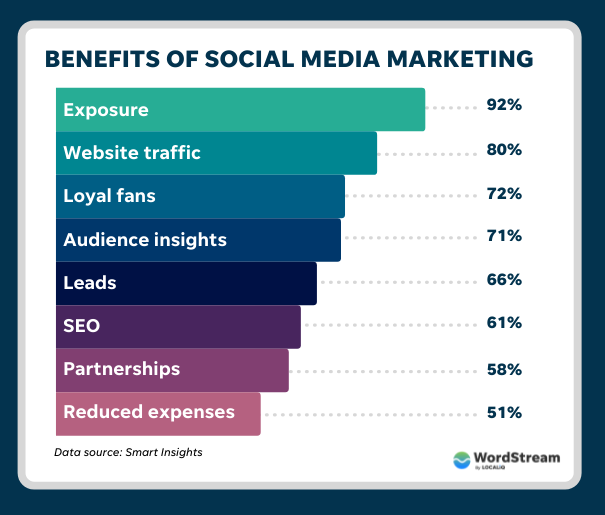

The bigger and more engaged your audience is on social media networks, the easier it will be for you to achieve your marketing goals.
Social media marketing statistics
With regard to the benefits above, don’t just take our word for it. Let’s take a look at some social media marketing statistics that prove its power:
- The average US adult spends 2.25 hours on social media every day.
- Over 70% of people who have a positive experience with a business on social media will recommend that business to their networks.
- Facebook users click on 12 Facebook ads on average every month.
- 81% of people use Instagram to research products and services.
- Nearly 80% of Twitter users feel more positive about a business when they get a response to their tweet.
- 4 out of 5 people on LinkedIn drive business decisions.
- 46% of TikTok users engage in the app without any other distractions.
The essentials of a successful social media marketing strategy
A successful social media marketing strategy will look different for every business, but here are the things they will all have in common:
- Knowledge of your audience: What platforms they use, when they go on them and why, what content they like, who else they’re following, and more.
- Brand identity: What is the message you want to convey to your audience? How do you want them to feel when viewing your content?
- Content strategy: While there is a level of spontaneity on social, you’ll need a structured content strategy to be able to have a consistent voice and produce quality content regularly.
- Analytics: Quantifiable insights will inform your strategy, including who you’re reaching, the right content to share, the best times to post, and more.
- Regular activity: Social media is a real-time platform. If you want to use it to grow your business, you need to post regularly, stay on top of engagements with your business, engage back, keep up with trends, and maintain accurate profiles.
- Inbound approach: Don’t use social media to pitch your business. Focus on adding value through useful and interesting content and building up those around you. This, in turn, will organically promote your business and others will promote it for you.
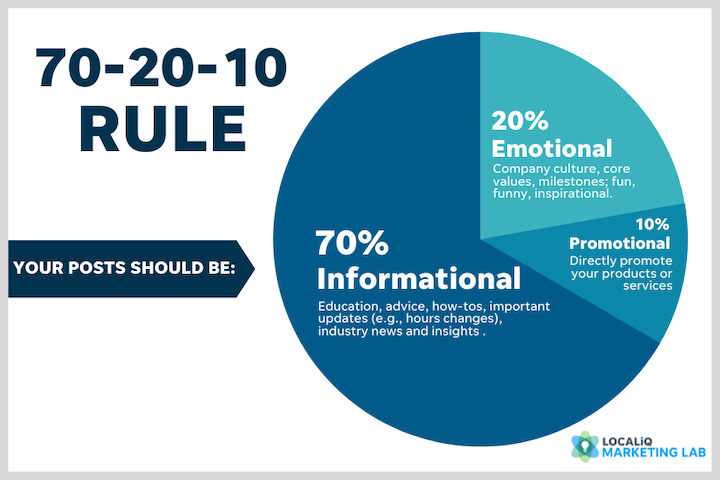

For more help, head to our Easy Guide to Social Media for Small Businesses
Creating your social media marketing plan
Now that you know the essentials of a social media marketing strategy, it’s time to put it into action. Your social media marketing plan is the roadmap to carrying out your strategy. It puts structure around your efforts so you can measure your success and make sure you’re spending your resources wisely. Here’s how to create your social media marketing plan:
- Choose your platforms: Choose based on your target audience, platforms popular for your industry, as well as your bandwidth. Only take on the number of platforms you can actively keep up with. You can always start with one and then add on more slowly as you get the hang of them.
- Set goals and objectives: These should be simple and task-like to start, like post once a day for a month, get your profiles set up, or do a competitive analysis. Once you get into a rhythm and gather insights, you’ll be able to set more specific and strategic goals like increase your following by X% or publish X [content types you’ve found your audience likes] per month.
- Report and adjust regularly: Use each platform’s analytics to identify which posts generate the most engagement, whether you’re getting more followers, and to see your audience demographics. Harness and scale up what works and nix what doesn’t.
Social media marketing tips
Ready to get started with marketing on social media? Here are a few social media marketing tips to kick off your social media campaigns.
Create diverse content
Consistent with other areas of online marketing, content reigns supreme when it comes to social media marketing. Make sure you post regularly and offer truly valuable information that your ideal customers will find helpful and interesting. This includes:
- How-tos, quick tips
- Local and industry news
- Data and insights
- Polls, questions, contests
- Updates and announcements
It also means making use of the variety of formats social media offers, including images, videos, stories, live streams, online stores, and more.
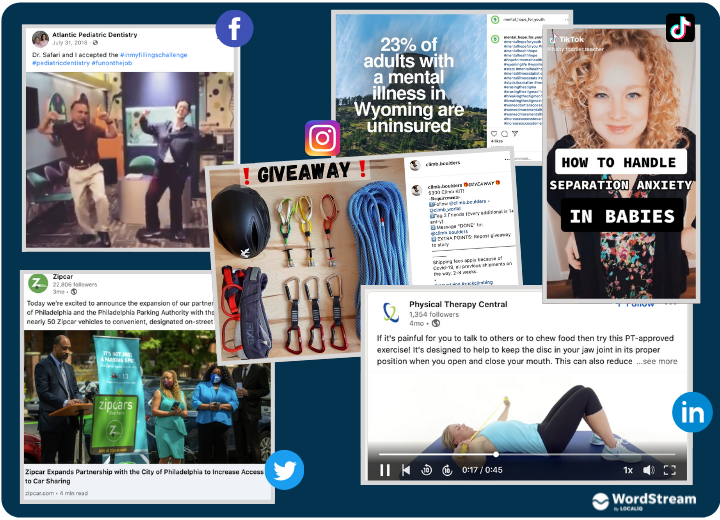

For help with creating awesome social media content:
Stay consistent
Using social media for marketing enables your business to project your brand image across a variety of different social media platforms. While each platform has its own unique environment and voice, your business’s core identity, whether it’s friendly, fun, or trustworthy, should stay consistent.
Don’t just post—participate
In other words, don’t just log in once a month to schedule out all your posts. Social media channels are communities. You need to pay attention to who’s engaging with your content and engage back—respond to comments, like, share and comment on their posts, run live streams, post polls and real-time questions to spark discussions, and repost others’ content.
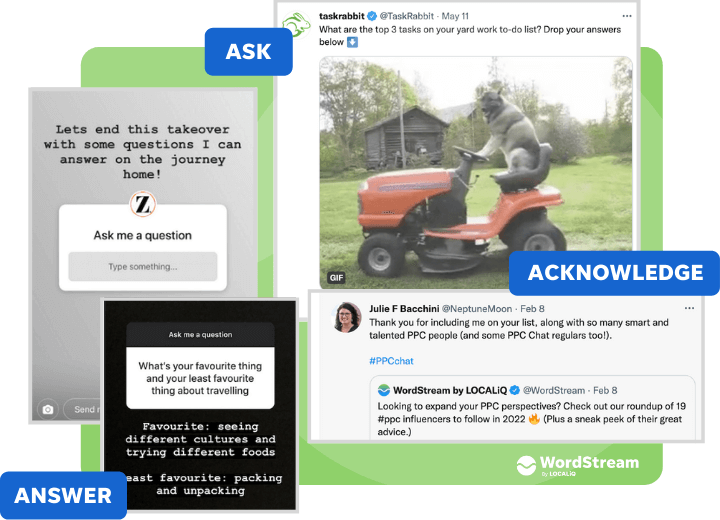

Use content creation tools
Don’t let anyone tell you that Instagram is the most visual social media platform. They all are! If you want to stand out in a person’s feed, you need to accompany your posts with attractive visuals—photos, illustrations, text turned into art. Content creation tools like Freepik and Canva have templates and features that allow you to quickly create visuals that look professional, have your logo on them, and are consistent with your brand.
Repurpose, repost, recycle
Social media is a crowded place, so if you want to gain traction with your audience, you need to post great content regularly. The secret to doing this? The three Rs:
- Repurpose: Create a Facebook post from a customer review, splice up a blog post into a series of Tweets, distill a case study down into a customer spotlight on Instagram; turn a webinar deck into a carousel post on LinkedIn. The possibilities are endless.
- Repost: To be done in moderation, but a great way to fill gaps in your content calendar. Repost on Instagram and retweet user-generated and influencer content. You can also curate content from authoritative sources and share those links in your posts.
- Recycle: Post your TikTok videos and Instagram Reels to YouTube; re-share your top-performing blog posts every month to get in front of new followers; add your Facebook Live recordings to your YouTube channel.
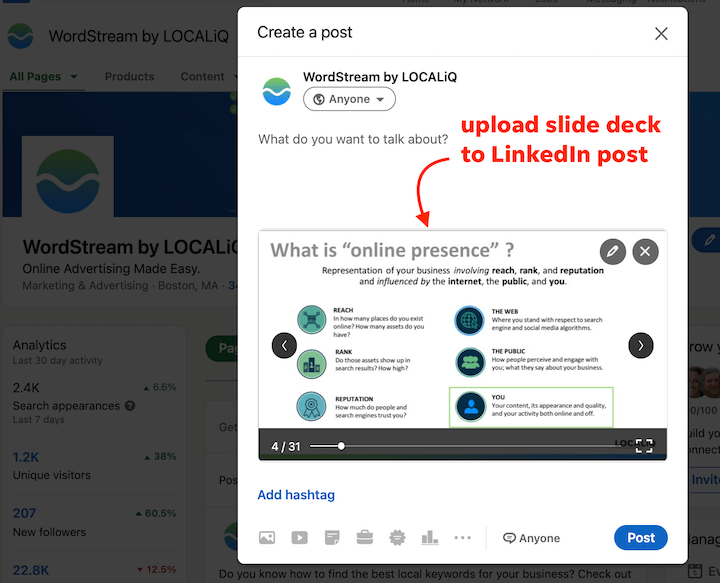

Curate your own feed
We’re always looking for ways to show up in others’ feeds, but we forget that there is value to be derived from our own. Follow your competitors so you can keep tabs on them, get ideas you can adapt to your own strategy, and identify gaps you can fill. Follow influencers to stay on top of trends and educate yourself. Follow brands that share your values or that have great content strategies for inspiration and outside the box ideas.
Measure success with analytics
You can’t determine the success of your social media marketing strategies without tracking data. Google Analytics can be used as a great social media marketing tool that will help you measure your most triumphant social media marketing techniques, as well as determine which strategies are better off abandoned. Attach tracking tags to your social media marketing campaigns so that you can properly monitor them. And be sure to use the analytics within each social platform for even more insight into which of your social content is performing best with your audience.
Try paid social
Among the many reasons to advertise on social media is that it is a highly cost-effective way to expand your reach. If you play your cards right, you can get your content and offers in front of a huge audience at a very low cost. Most social media platforms offer incredibly granular targeting capabilities, allowing you to focus your budget on exactly the types of people that are most likely to be interested in your business. Below are some tips and resources for getting started with paid social media marketing:
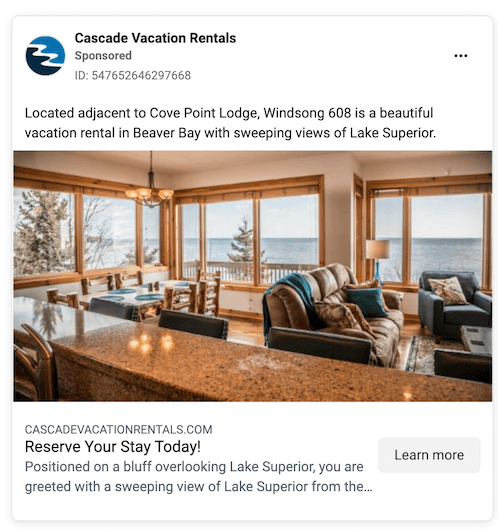

Free guide:
Speaking of Facebook Ads, how is your account really performing? Find out with our Free Facebook Ads Performance Grader.
The best social media marketing platforms for business
The best social media marketing platforms for business include Facebook, YouTube, Instagram, LinkedIn, Twitter, TikTok, and Snapchat. Different social media marketing sites require different approaches, so here’s a brief overview on each one—its user base, main vibes, pros, cons, and content types.
You can get a comprehensive look into each platform here: The Biggest, Baddest, Most Popular Social Media Platforms and How to Wield Their Power.


Facebook is the largest social media platform globally as well as one of the biggest local business directories. People of a diverse range of age groups use it to communicate with friends and family, participate in groups and forums, find and visit businesses near them, and follow brands. Facebook is a great social media marketing platform to:
- Build relationships with current customers
- Announce hours changes, events, and milestones
- Hold discussions and live streams
- Market to baby boomers
More resources for social media marketing on Facebook
YouTube
You may not think of YouTube as a social media marketing channel, but it fits the bill: you can post videos to your channel; share, comment on, and like other videos, and follow other accounts you like. Plus, you have a curated feed in your homepage with recommended videos. The key to social media marketing on YouTube is not to try to “go viral,” but to add value. It’s best for:


More resources for social media marketing on YouTube
Though it came onto the scene years after LinkedIn and Twitter, Instagram quickly surpassed those platforms and reached one billion monthly active users in 2018. It’s popular for its diverse content formats, including Feed posts, Stories, Lives, Reels, and IGTV. People use Instagram to follow influencers and brands they buy from and who support their personal values. Create your Instagram bio and then use it for:
- Social shopping
- Influencer marketing
- User-generated content
- Company culture
The cost of Instagram ads is generally higher than on Facebook, but the good news is that organic reach is also higher.
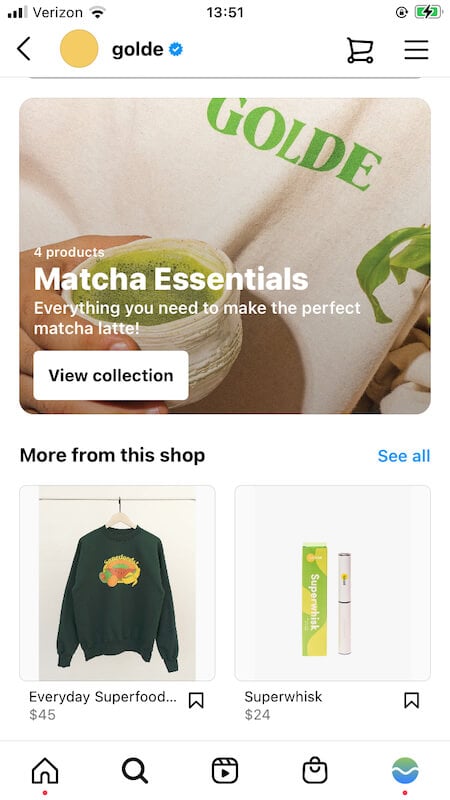

More resources for social media marketing on Instagram:
LinkedIn may be a professional network, but it’s also an inspiring community that celebrates leadership, learning, and core values. So in addition to using it to network, find prospects, and share industry insights, it’s also a great place to express your company culture and build your personal brand in parallel with your business brand. There are tons of LinkedIn company page features to take advantage of, so take care when building your page. LinkedIn is a great platform to:
- Attract top talent
- Network with partners, peers, and customers
- Share company milestones and culture
- Post industry news and insights
More resources for social media marketing on LinkedIn:
Twitter is a beautifully tangled network of quick thoughts, useful tidbits, and energized discussions. You should be regularly active on every social media platform, but it’s especially important here. Many people use Twitter to get news, follow brands, and get customer service. Be sure to retweet when a customer has something nice to say about you, and don’t forget to answer people’s questions when possible. For effective social media marketing on Twitter, you may want to:
- Follow influencers to keep up with news and trends.
- Share a story through a series of Tweets in one thread.
- Make yourself available for customer service and FAQs.
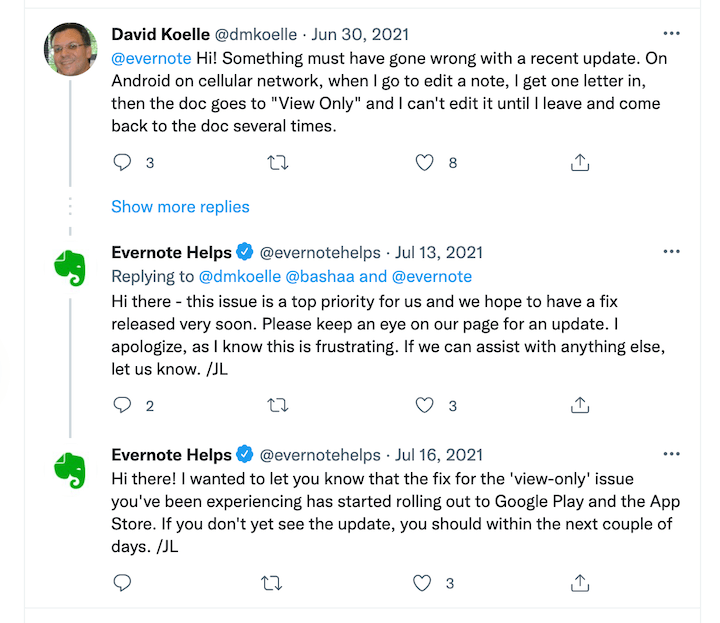

More resources for social media marketing on Twitter:
Snapchat
Snapchat isn’t just for teens. Its largest age group (75%) ranges from 13-34 and with Snap Maps, geofilters, and its partnership with Gannett, it’s more locally-focused than you might think. While you can’t build relationships on the platform, you can build an audience through fun images and short videos. Use Snapchat for:
- Location-based marketing
- App marketing
- Feel-good content
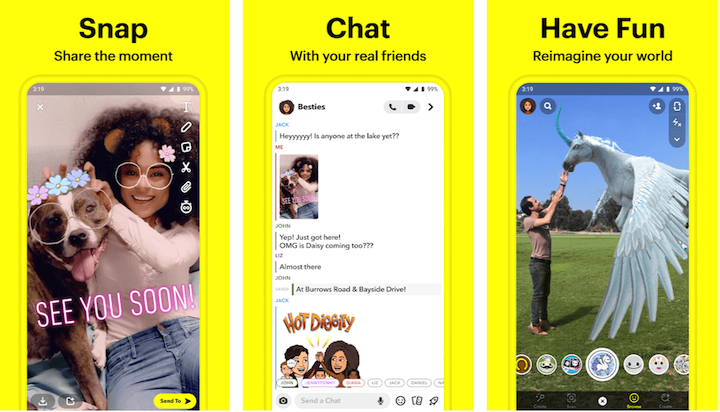

More resources for social media marketing on Snapchat:
TikTok
TikTok is the fastest growing social media platform of all time, taking only five years to reach one billion monthly active users. While it’s known for dancing, there are countless popular categories on the platform that continue to grow. Businesses are finding ways to use it as a marketing channel, but just remember, the primary reason people use TikTok is for entertainment, so make sure your videos align with that. Use TikTok to:
- Participate in trending challenges
- Post funny and inspiring videos
- Be relatable


More resources for social media marketing on TikTok:
Social media marketing courses
You can find our round-up of the best social media marketing courses here, but these, of course, are our favorites. Use them to increase your social media presence through organic and paid methods.
LOCALiQ Social Media Marketing Lab
LOCALiQ’s Social Media Marketing Lab contains a wealth of information and ideas fit for any business, whether small or large, local or national, starting from scratch or looking to improve. The free course provides:
- A comparison of each platform’s demographics, stats, and general atmosphere.
- What and how often to post on each platform.
- Profile requirements and optimization tips.
- Over 131 post ideas and examples.
Social Ads 101 [PPC University]
WordStream’s PPC University is your go-to if you’re looking to take advantage of paid social media marketing. Typical tutorials and platform help articles will get you started, but what about the more strategic aspects? PPC U courses are written by experts and influencers, with the goal of delivering tips, perspectives, and information you won’t find anywhere else.
Social Ads 101 includes:
- The benefits, metrics, and best practices of social media advertising.
- Crash courses on Facebook, Instagram, LinkedIn, YouTube, Snapchat, and TikTok ads.
- The tips and tricks of social selling on Facebook and Instagram.
Facebook Ads 101 [PPC University]
Also a part of PPC U, this Facebook Ads 101 course takes a deeper dive into intermediate and advanced subtopics, including:
- Daily vs lifetime budgeting plus account optimization strategies.
- Facebook ad types, audience targeting options, and scheduling.
- Tips and resources to produce great Facebook ad copy and creative.
- How to use a full-funnel strategy to take down your competitors.
Social media marketing services
As free and easy as each platform may be, a solid social media marketing strategy requires multiple platforms and often a mix of organic and paid methods. This can be resource-heavy, and while it’s a good problem to have, the more you grow your audience using social media, the harder it will be to keep up. Social media marketing services come in all kinds of shapes and sizes to help businesses get the most out of social media. For example:
- Social media management software: Social media management platforms like HootSuite and Sprout Social use proprietary technology to help more experienced social media marketers streamline their processes and get advanced analytics.
- Social media marketing agencies: Some agencies specialize in social media marketing only, like Akvertise or even just paid social advertising only.
- Digital marketing agencies: Just as one platform doesn’t do it for social media marketing, one channel doesn’t do it for overall marketing. Digital marketing agencies can help you to incorporate social media marketing into your broader strategy that includes email, website, SEO, and more.
- Hybrid services: Some offer a mix of the above. For example, LOCALiQ’s social advertising offerings use proprietary technology to manage your strategy and allow you to focus on social alone or as part of a broader plan.
Start prioritizing your social media marketing strategy
Using social media in marketing does more than improve site traffic and increase your reach. It turns your business into a personality that your audience can communicate and connect with on a deeper level.
Regardless of which platforms you use or how you use them, the most important thing to remember is that social media is not a platform to pitch your business. It’s a community for you to express your personality, demonstrate your values, share useful information, and build up those around you. With people naturally following you and promoting your content, there will be no need for pitching. And with this approach, you’ll achieve not just your business goals but all of the other intangibles that translate to gratification and fulfillment.


